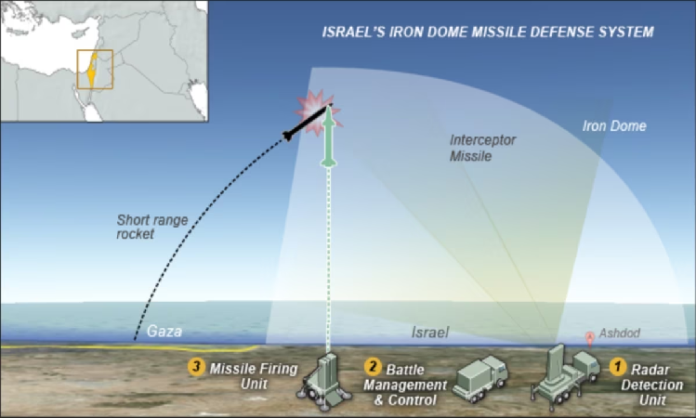
Table of Contents
In an era marked by increasing threats from missile attacks and conflicts, the Iron Dome has emerged as a true technological marvel, providing a shield of protection for civilians in Israel. Developed to safeguard the nation from short-range rocket and missile threats, this anti-missile defense system has garnered international attention for its unprecedented success in safeguarding civilian lives and infrastructure. This article explores the remarkable success story of the Iron Dome and its crucial role in protecting civilians from missile attacks.
The Genesis of the Iron Dome
The Iron Dome was conceptualized and developed by Israel’s defense industry, specifically Rafael Advanced Defense Systems, with the first successful interception taking place in 2011. It was designed to counter the constant threat posed by short-range missiles and rockets fired by various non-state actors operating in the region.
Precision and Speed: The key to the Iron Dome’s remarkable success lies in its ability to detect incoming threats, assess their trajectory, and intercept them with remarkable precision and speed. The system employs advanced radar and tracking technology to identify and prioritize incoming projectiles.
Tamir Interceptors: The heart of the Iron Dome is its Tamir interceptors, which are fired to intercept and destroy incoming rockets and missiles mid-flight. These interceptors are equipped with highly advanced sensors and are capable of making split-second decisions to ensure accurate targeting.
Cost-Effective Defense: While the cost of each Tamir interceptor is relatively high, it’s far more cost-effective than the potential damage caused by rocket attacks. By successfully intercepting and destroying threats, the Iron Dome prevents damage to infrastructure, reduces casualties, and minimizes the need for expensive post-attack repairs.
Remarkable Success Stories
The Iron Dome’s success in protecting civilians from missile attacks is exemplified by several notable incidents:
Operation Pillar of Defense (2012): During this eight-day conflict, the Iron Dome achieved an interception rate of around 84%, successfully neutralizing rocket threats from the Gaza Strip. The system’s precision was on full display as it selectively targeted rockets deemed to be heading toward populated areas.
Protective Edge (2014): In this 50-day military operation, the Iron Dome demonstrated its effectiveness yet again, intercepting hundreds of incoming rockets. Its ability to prioritize and eliminate high-threat targets played a pivotal role in safeguarding Israeli citizens.
Ongoing Protection: Since its deployment, the Iron Dome has continually protected Israeli cities and towns from rocket attacks launched from various hostile entities in the region. Its constant vigilance has significantly reduced the potential damage and loss of life.
International Interest and Collaboration
The Iron Dome’s success has garnered international interest, with several countries expressing interest in acquiring or co-developing similar defense systems. Israel has worked with international partners to share its expertise and collaborate on missile defense technologies, strengthening diplomatic and defense ties.
Conclusion
The Iron Dome stands as a testament to the power of technological innovation in safeguarding civilian lives during times of conflict. Its remarkable success in protecting civilians from missile attacks has not only been a source of pride for Israel but has also inspired other nations to invest in missile defense technologies. As the threat of missile attacks continues to evolve, the Iron Dome remains a symbol of hope and resilience, serving as a potent reminder that advanced technology can play a crucial role in protecting innocent lives.
Related Post:
About anti ballistic missile system
























